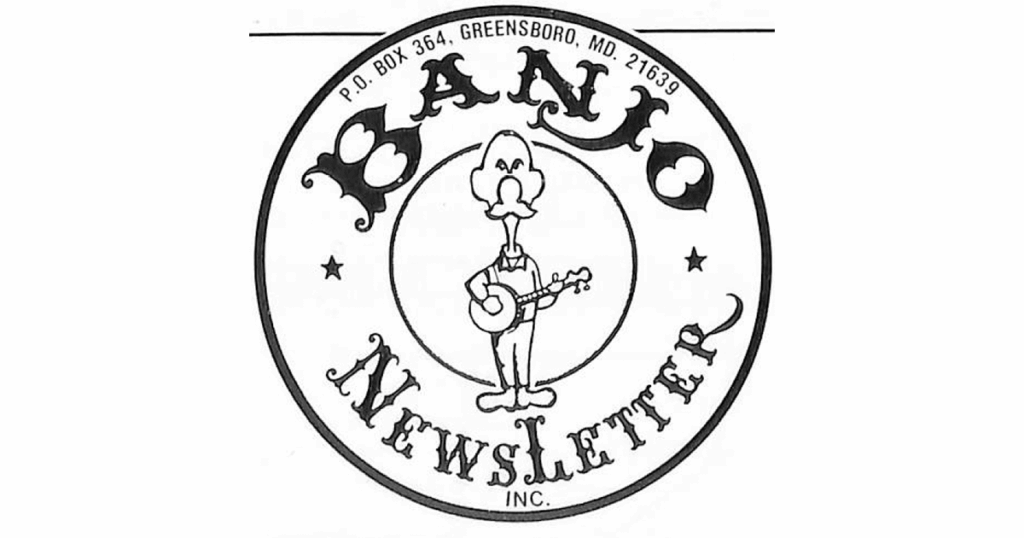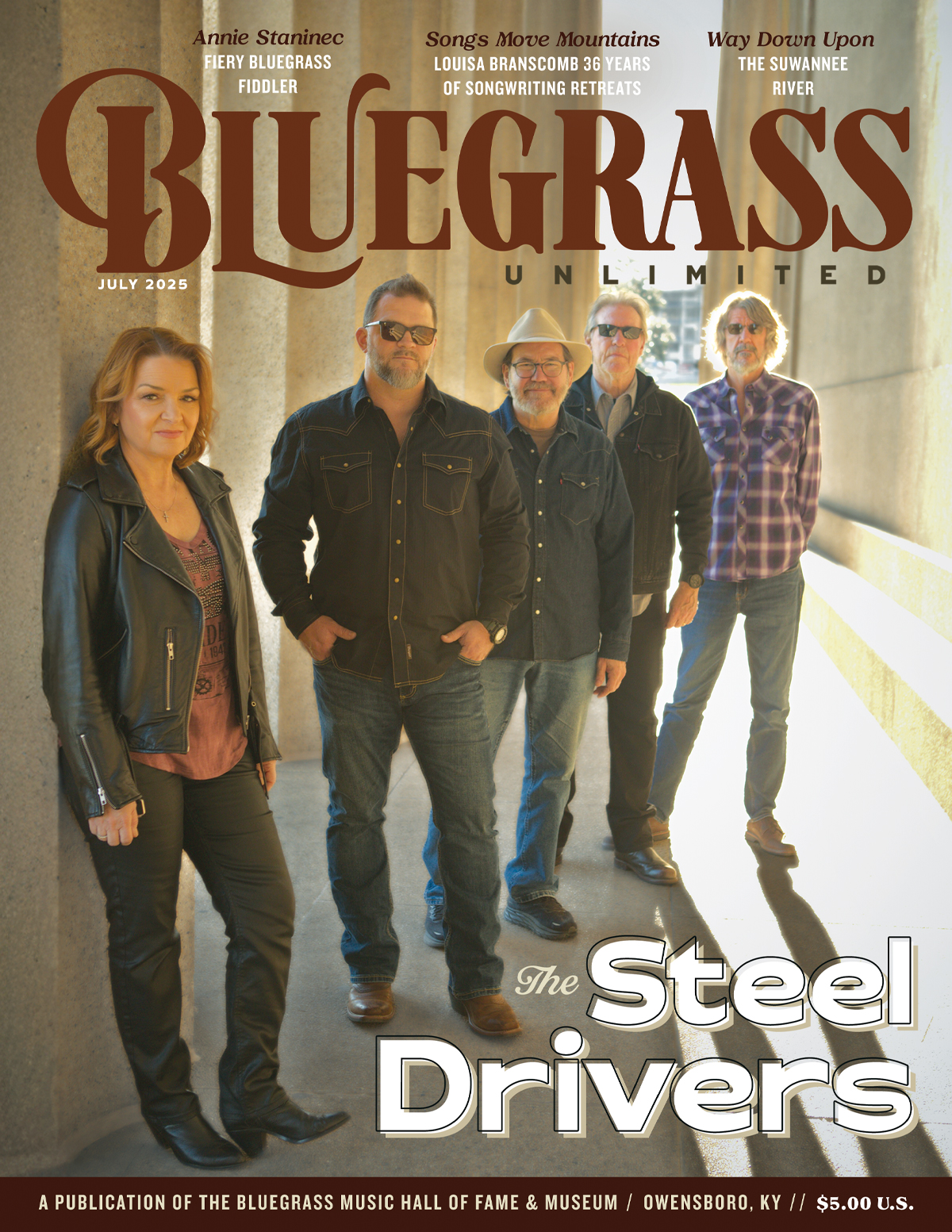Home > Articles > The Archives > It’s Been Nothing But Fun! — Hub Nitchie and Banjo Newsletter
It’s Been Nothing But Fun! — Hub Nitchie and Banjo Newsletter
Reprinted from Bluegrass Unlimited Magazine
August 1989, Volume 24, Number 2
In October, 1988, Banjo Newsletter, the 5-string banjo magazine, celebrated fifteen years of continuous publication. That’s one magazine a month for fifteen years! That’s 180 magazines—all devoted to the 5-string banjo. “Surely,” you ask, “can there actually be that much to say about the 5-string banjo?”
Actually, Hub Nitchie, editor and publisher of Banjo Newsletter, had a similar thought in 1972, after his first venture into publishing. He had just compiled several pages of information pertaining to the banjo, which he called “The Banjo Information Clearing House.” He typed it out on a stencil, ran it off on a mimeograph machine and advertised it for sale ($1.00) in the classifieds of Bluegrass Unlimited. It provided addresses and listings of banjo-oriented suppliers around the country. (For two stamps extra, you could also receive a free banjo tab.)
“Well, that’s it,” thought Hub. “I’ve nothing more to say. I don’t know what I’m going to do if I ever put out another one of these things, because I don’t have anything more to say about the banjo.” Right. And Billy Graham has nothing more to say about religion.
Fortunately for banjo aficionados all over the world, the effect of this first publication was to “bring more stuff to us through the mail from people all over the country, with comments or licks to share. And there’s never been a problem of having content or material to fill.” In fact, just the opposite. Nowadays, Hub frequently has to beg his columnists to shorten their columns so that there will be room for everybody!
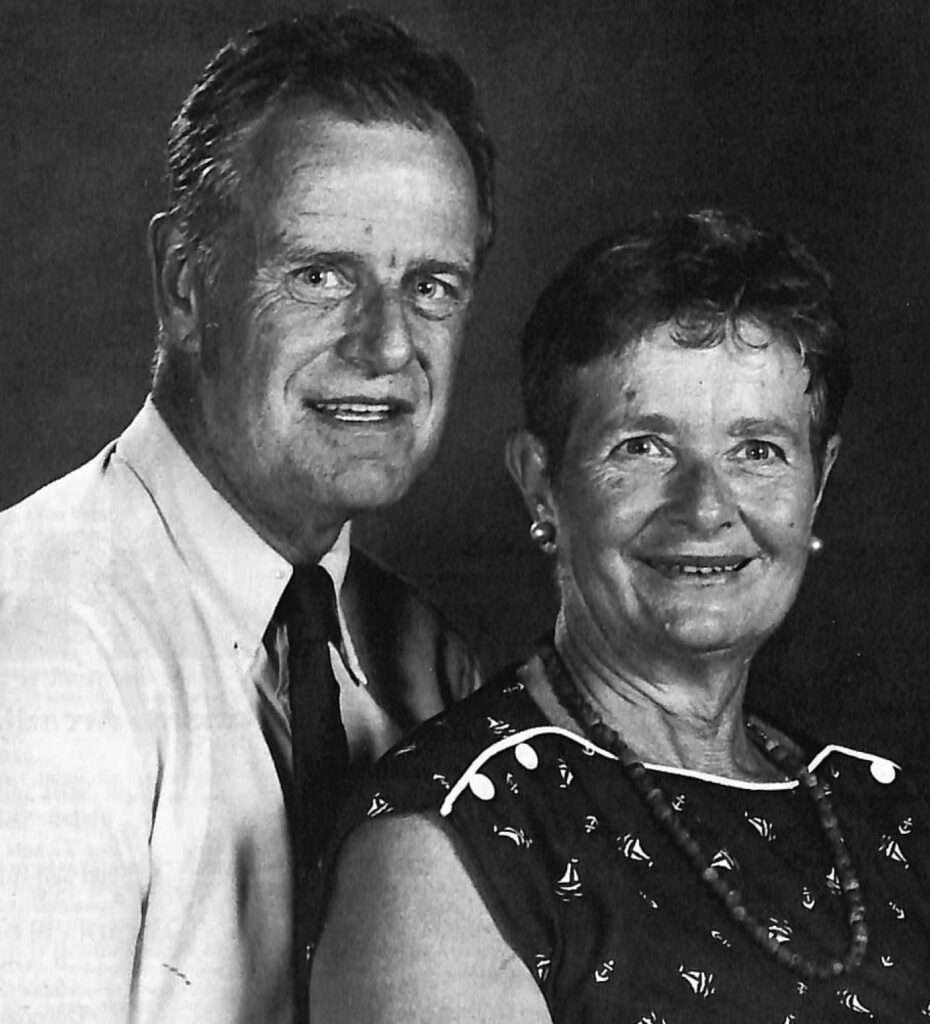
By March of 1973, Hub had decided to continue his “fascination with mail order” with a publication he called “Banjo Tablature Of The Month.” This, again, was a mimeographed affair that provided a new banjo tab every month—usually in the melodic style, an approach Hub is personally fond of.
The “Banjo Tablature Of The Month” continued through October of 1973. But what Hub was discovering, was that he had tapped an underground spring; he had blown the lid off a volcano: he had opened Pandora’s box. Here were all these 5-string banjo players out there, who had never before had a specific banjo publication in which to voice their opinions, share the secrets of their souls, or ask the questions that had been burning in their banjonic brains. Hub had “All this stuff and it started to accumulate” and he needed more than just a couple of pages to present it all. Along with the monthly tab, he wanted to throw in some gossip, some hints, some tips and some letters. So in November of 1973, he published the first issue of what was rather heavily titled, “The Monthly Newsletter That Covers The 5-Sting Banjo (Including the Banjo Tablature Of The Month).” It wasn’t until February of 1974, that the succinct title Banjo Newsletter emerged.
It is fascinating to look back down through the years, via the old issues and literally watch Banjo Newsletter grow and develop. That first issue consisted of six typed, mimeographed pages, stapled together in the left-hand corner. It contained one banjo tab—“Bristol Steam Convention Blues” (a tune recorded by the Byrds), an article on the 5th string capo, three classified ads and two pages of various items of banjo information. This was the only issue of BNL in which everything was written by Hub. The very next issue contained almost a whole page of banjo tips from Roy Thorpe, from Vancouver, Washington. And from there, the readers were off and running, with Hub at the wheel.
Two things stand out in this issue that define Hub’s philosophy, not only about the magazine, but also about the music. The first is found in his introductory paragraph: “I solicit the help of all subscribers. If you have some ideas, information, tips, theories, etc., that will be of interest or value to others pickers, send it along and I will try to use it.” Hub and his wife Nancy are always very quick to point out that “BNL is what people have made it by their contributions.” This philosophy was present from the beginning.
The second credo is found on page two, in an article Hub wrote about jamming with (acoustic) non-bluegrass people. What he likes best about this situation is “being forced to play in keys that are really unnatural to the banjo. It becomes a good musical workout.”
This pretty well defines Hub’s whole attitude toward music and the banjo. He is “obsessed with the banjo,” and he loves bluegrass, but he wants his subscribers to keep an open mind to the idea of the banjo as a musical instrument, not just a bluegrass instrument. So, in keeping with both facets of what is really one philosophy, Nitchie has always featured articles on all styles of 5-string banjo playing, written by all kinds of people: old-time/clawhammer, jazz, classical, ragtime and of course, bluegrass. And even within the bluegrass classification, he features all styles of playing: Scruggs, Reno, Stanley, Béla Fleck, melodic to name just a few. And though the first issue of BNL was written entirely by Hub and contained but one tab, soon he was publishing tabs by other people—all subscribers—and letter and articles from readers on a variety of subjects. Some subscribers became regular columnists. Bob Gaddis, then living in Boca Raton, Florida was one of the first. His letters and comments evolved into a column called ‘The Resonator,’ which, according to Bob, was “a free-wheeling commentary about anything and everything concerning banjos, banjo-pickers and the state of the art.” Dick Kimmel first appeared in March of 1974, with a column about the Stewart-MacDonald Banjo Kit. He then began regularly contributing tabs in the clawhammer style and eventually became, for several years, the clawhammer editor. Janet Davis, from Texas, contributed a tab of “Orange Blossom Special” in January, 1976, and by the end of the year was doing a regular column on “Back-up Banjo,” a column which she continues to this day.
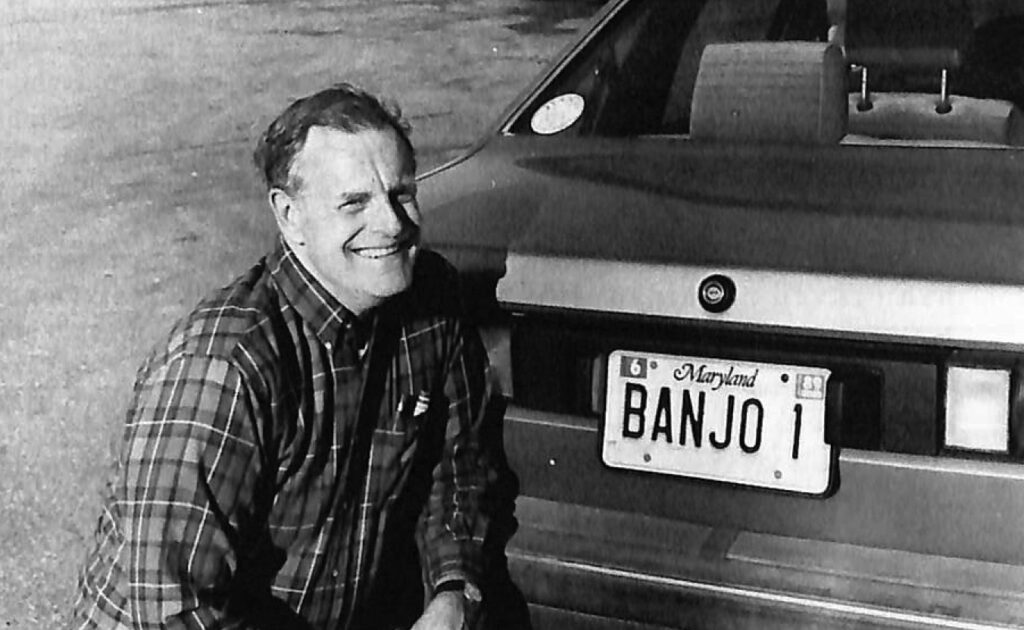
Hub did a review of a collection of banjo licks and endings by Harold Streeter in April, 1974, and commented “Where has this guy been hiding? I consider the man to be a gold mine.” Five years later, this “gold mine” became a regular columnist, writing a column entitled “Arrangement Development” which he still contributes.
Ty Piper of Imperial Banjo started a regular column in February, 1976, called “Shop Talk,” about the construction, repair, set-up and conversion of banjos. Mike Bailey (February, 1976,) started a column aimed at beginners, cleverly entitled “Beginner’s Corner.” Wayne Shrubsall contributed many tabs on everything from Bill Emerson to Irish-Scottish tunes for banjo. Fred Geiger did a column in December, 1976, about Sonny Osborne’s playing, “Osborne Like and Sonic Shapes”—in which he talked about “Bb13th chords,” saying they could also be described as “G7 with a flatted ninth” but “they sound like diminished chords, don’t they?” Sure they do, Fred. He is still telling us all about them in his long-running column “Chorducopia.”
For several years there was even a monthly column written by Sonny Osborne. Called “Keep on the Sonny Side,” it was a tour-de-force of Sonny’s outrageous wit, his tremendous knowledge of banjo playing and his opinions on almost everything. As Sonny stated in his first column (October, 1977,) he started the column “to try to help bluegrass music in general and the banjo in particular.” His “main purpose” was “to answer questions from young people and beginners who are just starting, [to] try and get them off on the right foot so they wouldn’t have some of the problems I had back when I was learning to play, with nobody to help.” His “columns” generally ran one or two pages and covered everything from capos, to instrument repair, to festivals, to what it was like in the beginning, to styles of banjo playing, to his “new” Gibson 1934 all-original 5-string Granada. He also answered many specific questions that his readers wrote in and asked. It was a privilege and a treat to get to “listen” to this articulate bluegrass giant speak his mind—and he always did.
Alan Munde was another “banjo giant” whose monthly column, “Munde’s Morsels,” graced the pages of BNL for years beginning in late 1978. Alan’s column differed from Sonny’s in that it usually featured a banjo tab of a tune that Alan had recorded and tips for playing the tune. Sometimes readers would write in with different—simpler—ways for Alan to finger difficult passages. He was always gracious in acknowledging these suggestions. If Alan didn’t have a tab to run, he would on occasion revert to one of his favorite topics—right hand position.
The “Scruggs Corner,” a popular column still in existence (now entitled “The Scruggs Center”), was started in November, 1971, by Jack Hatfield. It of course featured tunes recorded by Earl Scruggs, but occasionally offered a tune done by others in the Scruggs style. When Jack could no longer continue the column, it was picked up by an anonymous writer—BNL’s only anonymous writer—the “Flint Hill Flash”—who has probably stirred up more controversy than anyone at BNL, with his incessant admonition that there is only one right way to play the banjo and that is the way Earl did it. The flash raved against the “chromelodic-melomatic” style of picking, treated us to an inside look at the Flint Hill Community and introduced the word “scrugg” into the language as a common noun: “He is Scruggs. I am a scrugg.” Obviously, Hub could not possibly have agreed with everything the Flash wrote about, but, following his own open-mind philosophy, he printed it anyhow. (Or most of it.) The banjo tabs that went along with the column were a treasure trove to those who truly did want to “pick it just like Earl.” The Flash continues to amaze, amuse, aggravate and annoy BNL readers today.
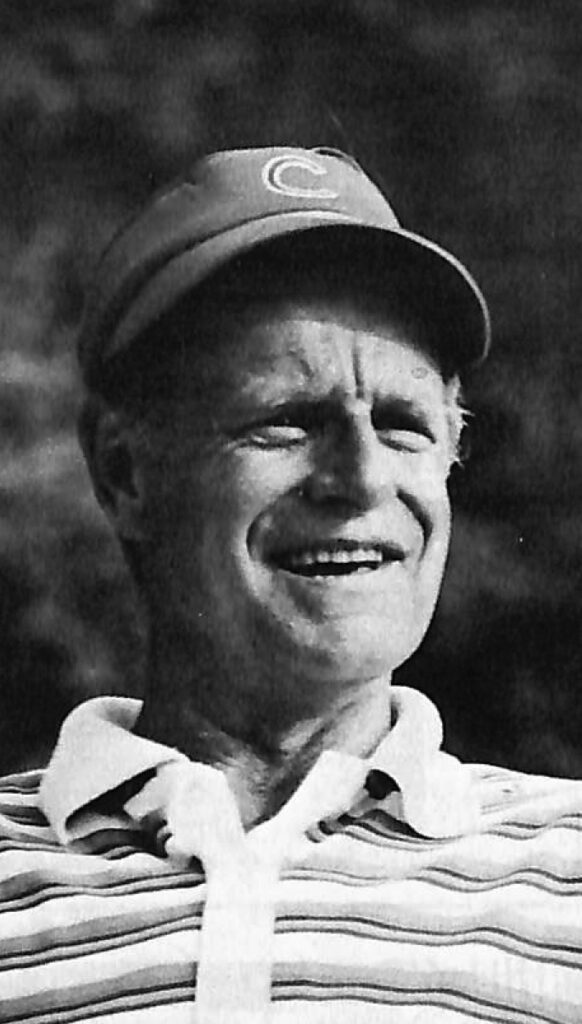
By 1979, there were so many contributors to BNL that Hub himself was doing little writing and very few tabs. As he wrote in his editorial—catch-all column “Callous Thumb”—“with all the great columnists that are writing for BNL, I haven’t been able to write an ‘Exploring the Fingerboard’ [his own banjo column] in months.” He still did an occasional interview—interviews with great banjo players had become a prominent feature in the magazine—but he was slowly becoming more of an editor—the guy who puts it all together.
There are and have been so many good columnists for BNL that just to single out a few constitutes a gross disservice to the rest. Nevertheless, “Reno Banjo” by Ed Chernesky is still going strong, with tabs of Don Reno’s famous tunes as well as his obscure ones. For those who “don’t want to get too hot with it, you know,” by John Wright. At one time there was even “Closet Banjo” by Wayne Erbsen, a column for real beginners. Wayne did a hilarious column in June of 1980, called “The Art of Tobacco Chewing for the Complete Ignoramus.” He managed somehow to tie it into banjo playing—“Remember a good chew will help you perk up and pick!” This just serves to illustrate that Hub gives his columnists a pretty free rein with their material. From time to time this has resulted in some odd outpourings, but if the readers don’t like what’s being said, they are quick to let Nitchie know.
From the start, Hub has always published many letters from readers—some running as much as a full page—but as he said early on: “The BNL is a forum for all banjo players to speak their minds. There may be articles that include opinions that you don’t agree with. Good! If you have a theory or idea that is better, send it along so we can share it.”
The readers have always been an integral part of BNL. Harold Streeter perhaps spoke for all the columnists and contributors when he said, in his First column, “I look forward to writing such a column, because playing and teaching banjo oyer the years has left me with a few ideas that I’d like to share with you.” These “few ideas,” coming from banjo players all over the world, have made BNL truly “The 5-String Banjo Magazine.
But what about the man behind the magazine? The man who harnesses all the ideas every month? The man who was so obsessed with the 5-string banjo that he gave up his day job to publish a banjo magazine? What about Hub Nitchie himself?
Hub is a very modest man, yet a man who loves to talk—about everything but himself. He likes to attribute the success of BNL to its columnists, but he is the spark behind the magazine—the force that makes it a reality—the “main man” who is responsible for putting out an issue every month.
Hub Nitchie grew up a “city kid” in Roselle Park, New Jersey, a town which in only ½ hour from New York City by train. He says, of his youth, “I never knew what a banjo was, but I obviously wasn’t very astute, because my father played tenor banjo but I never really heard him play.” Hub’s mother played piano, an instrument Hub never had much luck with. His musical background was the trumpet, which he played in the high school band and his favorite music was old jazz. Hub never learned to read music (with much facility) in high school, but he says, “I had a natural ear and when we got new music in the band I would get the guy in charge to hum it for me and if I heard it, I could play it.” He attended college at Rutgers, New Jersey, dropped out, joined the Navy, met and married his wife Nancy while in the service, got out, started a family and not really knowing what he wanted to do attended teacher’s college in New Jersey while he lived at home and “part-timed it.” Nancy taught and helped put him through school. It was “a typical story of many of our generation.” Hub found out that he liked teaching and says, “In a sense that’s what we’re still doing.
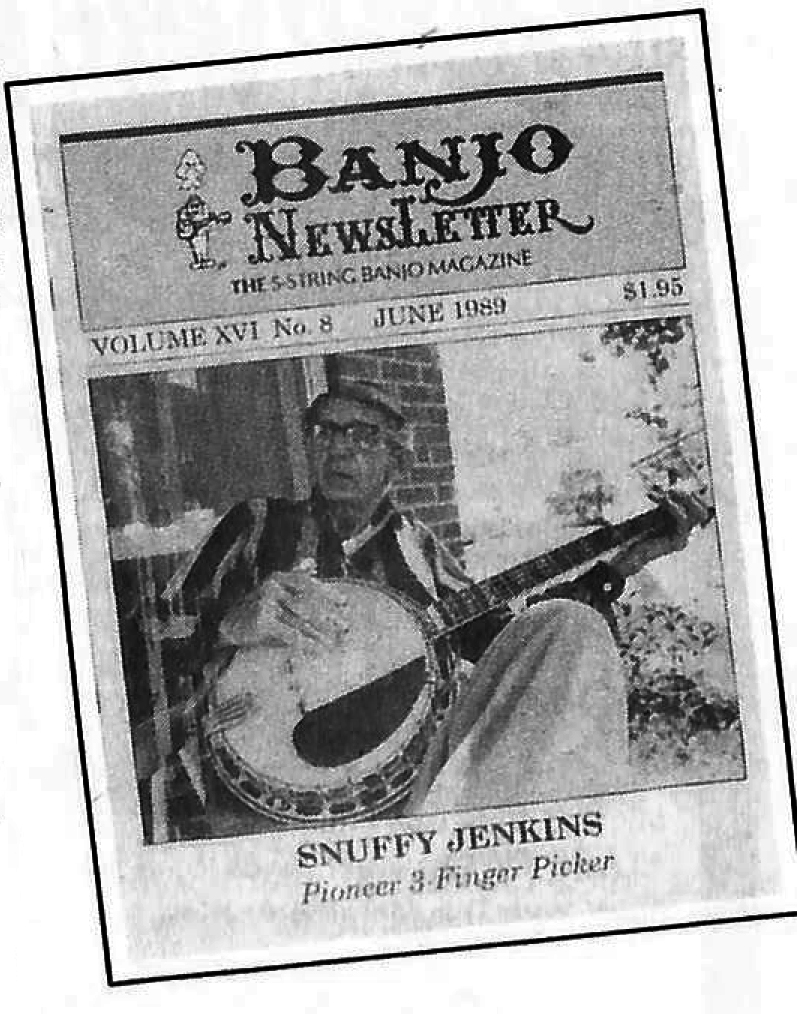
It was actually Nancy’s family that exposed him to his first country music, in the sixties. Her uncles, up on Martha’s Vineyard, all played stringed instruments and would have “these magical, marvelous, musical family gatherings,” with fiddle, banjo and arch-top guitar. Hub “fell in love with the whole idea” and went out and bought himself a banjo. Unfortunately, not realizing there was a difference, he bought a tenor banjo. He strummed away with this until he met Roger Sprung, who told him. “You got the wrong banjo.” Hub then “regrouped and got a 5-string.”
Although Hub had no specific, career goals in mind when he began his education, the skills he acquired while in the Navy and then subsequently as a teacher and librarian, provided an excellent background for becoming the publisher of a banjo magazine. In fact, it was while he was working as a librarian that he started the “Banjo Tab Of The Month.” “I was always looking for banjo stuff,” he says. “And knowing how to use a library properly meant I could dig maybe deeper than some and find significant stuff; so I’d find patents and things like that. So that was the hobby, that was the interest that was always there. Then [it all] came to fruition with the magazine…a little bit of photography, a little bit of knowledge about audio recording, a little bit of skill in being able to sit down and write something first-draft and have it readable…putting pages so they looked presentable…”
In the beginning, Hub did it all—the writing, the typing, the collating, the stapling, the addressing and the mailing. He kept up with subscriptions, changed addresses and licked stamps. This was his project and he wanted to do it all. But as the magazine grew, all this “grunt work” became too much and Nancy Nitchie, his wife, took over the business end. This left Hub free to be a writer and editor. Their three children, Don, Emily and Spencer also helped with the office work while they were living at home, but, as Nancy said, “They beat an early retreat in the 1980s.”
In the beginning days of the magazine, Hub used to do quite a bit of traveling to various bluegrass festivals to promote BNL and meet his subscribers. He was easy to recognize, because he looked like his logo: a bald- headed man with a big moustache and a banjo. In fact, a question frequently whispered to Nancy Nitchie was “Why does he shave his head?” She would always whisper back: “I don’t know.” Actually, the shaved head was the result of an atrocious job of self-barbering. In trying to level his own crew cut, Hub kept getting it shorter and shorter and shorter—“It was like cutting table legs off and making a table level,” he said. “Before I knew it, I had a mess.” So he just evened it up all over by shaving his head. His looks became a wonderful identity factor and Hub was easy to find in a crowd.
But, alas! no more. As Sonny Osborne said in the March, 1980, issue, “Hub doesn’t look like Hub any more.” Somewhere along the line, Hub just let his hair grow back and shaved his moustache. But his logo has neither shaved nor sprouted and still remains, for the ages, the symbol of BNL.
An anniversary is always a momentous event . . . BNL started as an idea to share and circulate 5-string banjo information, to pay homage to America’s native instrument and those who have made it what it is today and hopefully, to grow into a respectable journal about a long-neglected subject. Any success BNL has had is due to the contributions and encouragements from banjo pickers from all over the world. It is greatly appreciated!” This paragraph came from Hub’s “Callous Thumb” column when BNL was two years old. Thirteen years later, BNL has certainly grown into a “respectable journal.” Hub always says that he couldn’t have done it without the contributions of his subscribers. And he is probably right. But without Hub—without his vision, his desire and his willingness to grind it out every month—there would have been no Banjo Newsletter.
